Moon Monday Issue #52
SpaceX to land the first Artemis astronauts on the Moon after all, NASA & Intuitive Machines select landing site for crucial polar mission, the scientifically rich Schrödinger crater, & more updates.
Moon Monday completes a year of covering global lunar exploration and science updates. And I’m happy to say I haven’t missed a single week! 🎉
Moon Monday also recently crossed a 1,000 email subscribers, many of which are planetary scientists, people working at space agencies, engineers at space companies, and fellow writers and journalists. It’s a personal milestone, especially given that independent blogs are much harder to gain an audience on than by YouTubing or podcasting. Thank you everyone for reading Moon Monday, to those who gave feedback and shared, and to each of you who supports the project not just financially but also in spirit. Thank you also to two terrific newsletters The Orbital Index and The Downlink for inspiring me to write this one. If you like your space curated, technical and fun, I highly recommend these.
Here’s to going forward to the Moon. 🚀
Highlight
The U.S. Court of Federal Claims denied Blue Origin’s lawsuit against NASA for the agency selecting SpaceX Starship as the sole spacecraft provider to land the first Artemis astronauts on the Moon. This means NASA can resume work with SpaceX on the contract and set milestone target dates. Shortly after the decision was made public, Blue Origin founder Jeff Bezos tweeted “Not the decision we wanted, but we respect the court’s judgment, and wish full success for NASA and SpaceX on the contract.” The judge’s full statement on the decision will be made public by the end of year after redacting parts of it to protect things such as trade secrets.
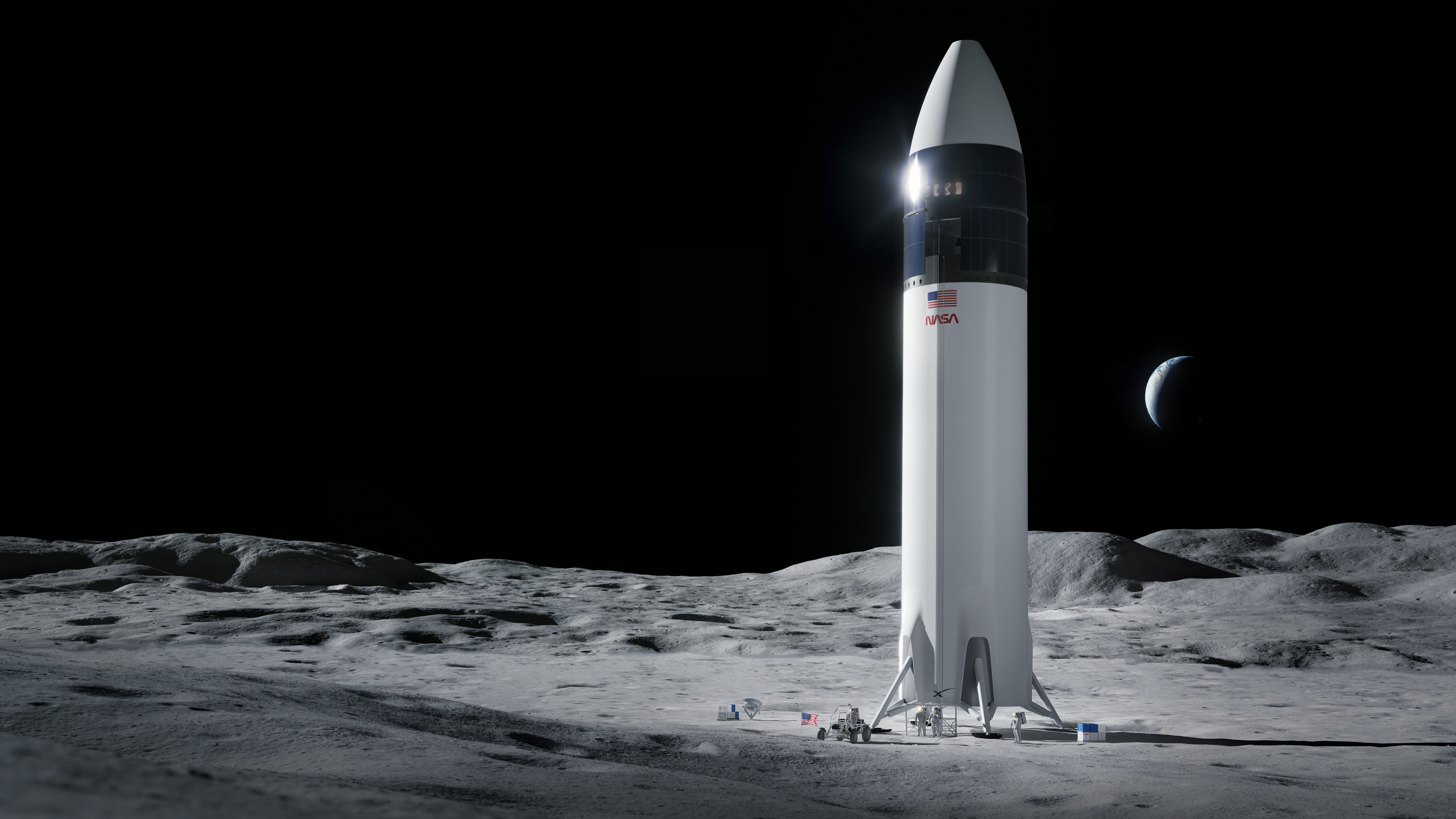
However, the drama may not be fully over yet. NASA is still under pressure from the U.S. Senate to include a competitor for the mission. On October 18, the U.S. Senate released the latest draft of its appropriation bills for fiscal year 2022, which if passed would direct NASA to select a second company regardless of funding availability. Whichever way this plays out, NASA has formally begun planning its Lunar Exploration Transportation Services (LETS) program to regularly ferry astronauts to and fro the Moon after the first few Artemis missions. To that end, NASA funded five commercial companies two months ago—including Blue Origin and SpaceX—to advance their crewed and large-cargo lunar lander concepts in specific ways that makes them cost-effective and sustainable.
Exploration
NASA continues final testing related to the Orion spacecraft to be able to launch the Artemis I Moon mission in February next year at the earliest. Since November first week, NASA and the U.S. Navy have been practicing sea recovery procedures and operations for when the 6350-kilogram Orion capsule splashes down in the Pacific Ocean at the end of each mission. The ongoing tests recover a mock Orion capsule in various conditions, including at night. Last month, NASA completed wind tunnel testing of Orion’s heat shield components. Earlier this year, NASA completed a series of water drop tests of a mock Orion capsule to verify the capsule’s structural design and tweak things before NASA sends humans onboard the Artemis II mission in 2023.
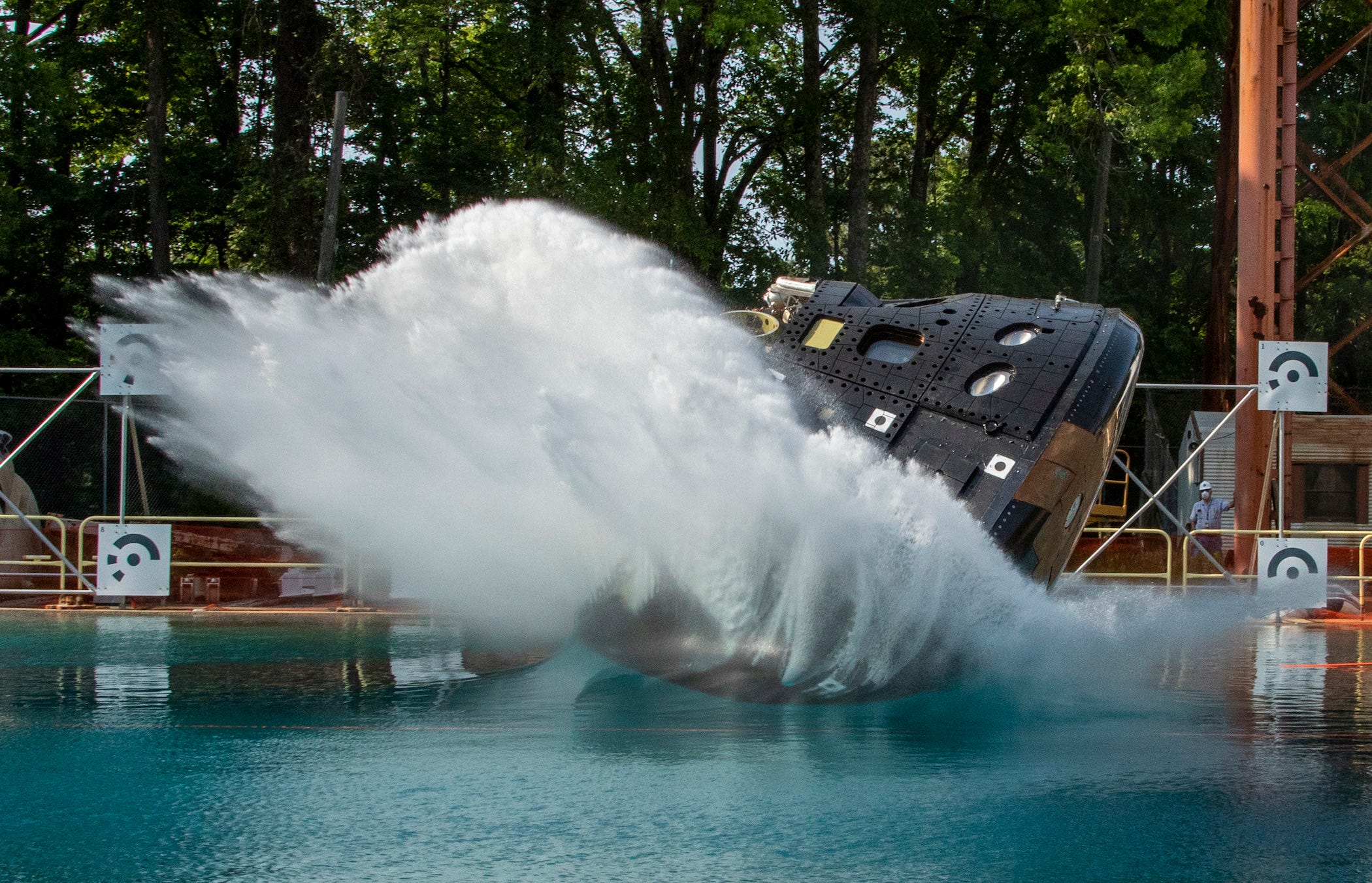
Meanwhile, NASA is calculating an optimal Earth-Moon-Sun geometry to determine the exact launch dates and windows for Artemis I. There’s a roughly 21-minute launch window on February 12, 2022, increasing to a maximum of 120 minutes for several consecutive days before decreasing roughly to 42 minutes on February 27. In an interview with Artemis 1 Mission Manager Mike Sarafin, NASASpaceflight provides a great breakdown of all the major factors affecting the launch date, time and orbital paths. Two of the biggest factors are the SLS rocket’s limited upper stage performance and the Orion capsule not facing more than 90 minutes away from sunlight. A paper on the SLS rocket’s launch windows notes that the rocket’s Block 1B configuration, to be ready in the middle of the decade, will be able to launch virtually any day of the month due to its enhanced performance. Relatedly, the construction of a new launchpad for this upgraded SLS rocket has been delayed because NASA ran out of near-term funding.
NASA and Intuitive Machines co-announced the landing site for the latter’s second commercial Moon mission in late 2022 as part of NASA’s CLPS program. Intuitive Machines’ lander will touchdown on a ridge connected to the nearby permanently-shadowed Shackleton crater on the Moon’s south pole. Since the lander would sport a NASA-provided drill to extract water ice, selecting the landing site was a tradeoff between locations of accessible underground ice as suggested by existing orbital data, having just enough sunlight to power the lander and its instruments, and a direct line of sight to Earth for communications. If all goes to plan, this mission will be the first to demonstrate extracting and tangibly studying water and other resources on the Moon. It will provide key engineering and scientific insights for NASA’s VIPER rover mission launching a year later to map water ice on the Moon’s south pole.
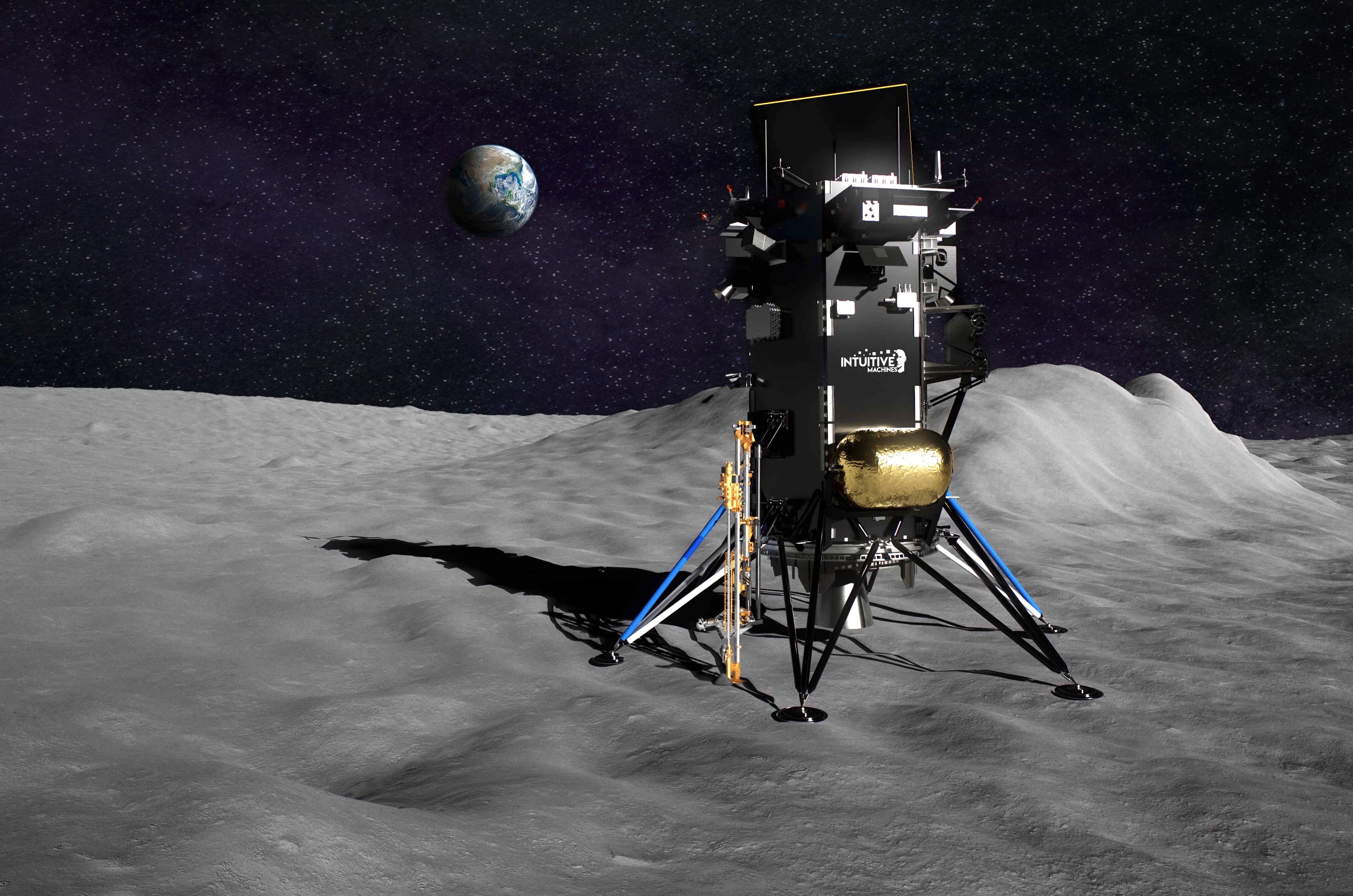
The lander will also carry a small rover developed by Lunar Outpost for a maiden test of Nokia’s 4G/LTE wireless network on the Moon. The rover will communicate to a LTE base station on the lander, and the lander will relay that data to Earth. The rover will study the performance of the LTE communications system for 12 days in varied conditions to see if we can get high-throughput, long-range and low-latency communications on the Moon, infrastructure necessary for sustainable presence.
The Intuitive Machines lander will also host the company’s own hopper called Micro-Nova, supported by a $41.6 million NASA contract. It will jump around the Moon’s surface with a 1-kilogram camera, which will take the first-ever pictures inside permanently shadowed regions as well as high-resolution images of the surface under its flight path. Micro-Nova can fly into lava tubes and other such regions practically inaccessible by traditional landers and rovers. In the future, scientists can put their own small science instruments on the hopper.
As part of the Cooperative Autonomous Distributed Robotic Exploration (CADRE) project, NASA JPL has been testing an autonomously navigating team of shoebox-sized rovers on a simulated lunar-terrain to see and improve their ability to collectively better map a planetary region than a single rover ever could. NASA intends to fly these CADRE rovers on a commercial lander in the next 5 years as part of the agency’s CLPS program. On a related note, NASA recently approved Astrobotic’s MoonRanger rover to fly to the Moon onboard Masten’s 1st lunar landing mission in 2023, also part of NASA’s CLPS program. This shoebox-sized 13-kilogram rover boasts autonomous navigation and mapping capabilities, which NASA is making use of by putting a neutron spectrometer onboard to detect signs of water ice below the Moon’s surface.
Science
The Moon’s farside hosts the spectacular 312-kilometers wide Schrödinger crater with its crown-shaped mountain ring formed 3.8 to 3.9 billion years ago.
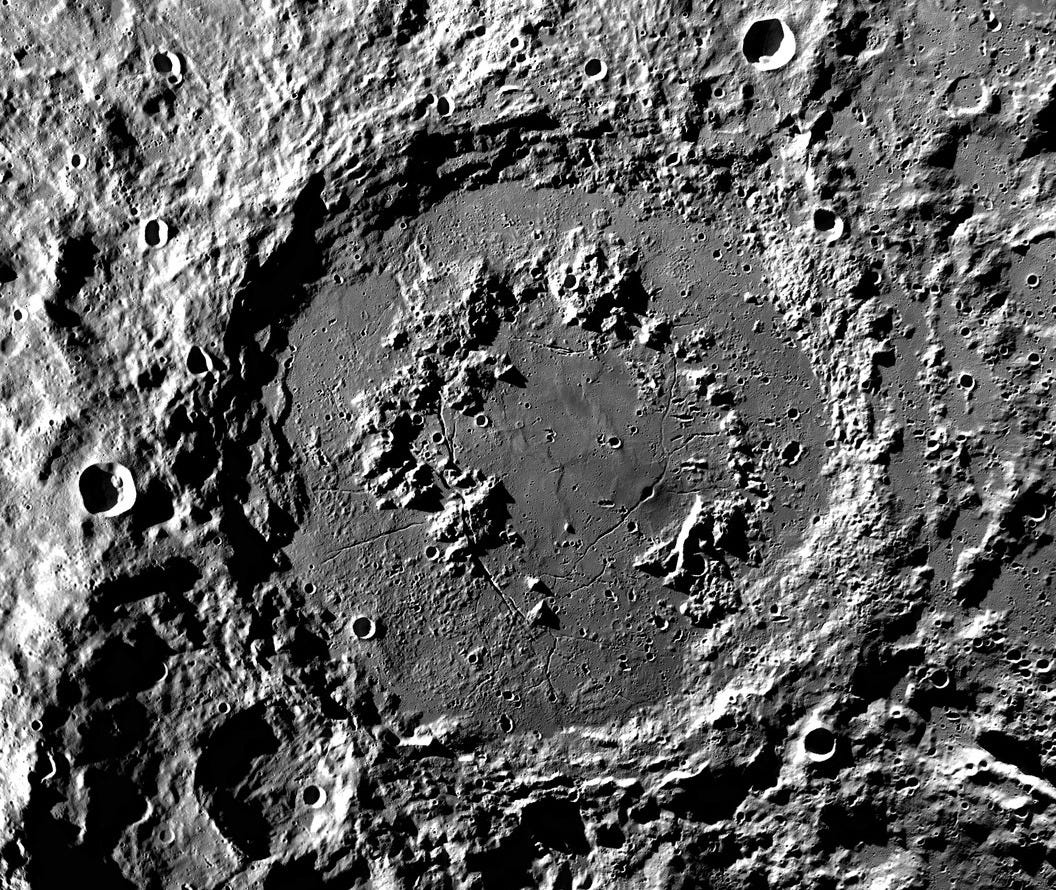
The Schrödinger crater is the best preserved impact feature of its kind and boasts several interesting geological features of great scientific value. Its uplifted mountain ring provides a surface mission access to materials that originated deep within the Moon’s crust, as well as materials ejected from the larger South Pole–Aitken basin, the largest impact feature on the Moon. Its smooth lava plains and several lava channels can provide valuable insights into Moon’s volcanic processes. Determining the crater’s exact age by collecting samples from it will help us answer fundamental questions about our Moon, particularly the magma ocean hypothesis, lunar cataclysm hypothesis, how craters form, and how the Moon evolved.
Schrödinger’s scientific value has made it a hot target for future mission considerations by organizations around the globe.
NASA is sending a commercial landing mission to Schrödinger in 2024, which will use its two distinct lunar-night-surviving seismometers, a drill, a probe, and a magnetic sounder to help us better understand the Moon’s internal structure, internal heat flow and electrical conductivity.
ESA, JAXA, and CSA undertook a joint mission study using ESA’s upcoming Large Logistics Lander to bring samples from the Schrödinger crater. Sadly, the mission has not been passed for further development.
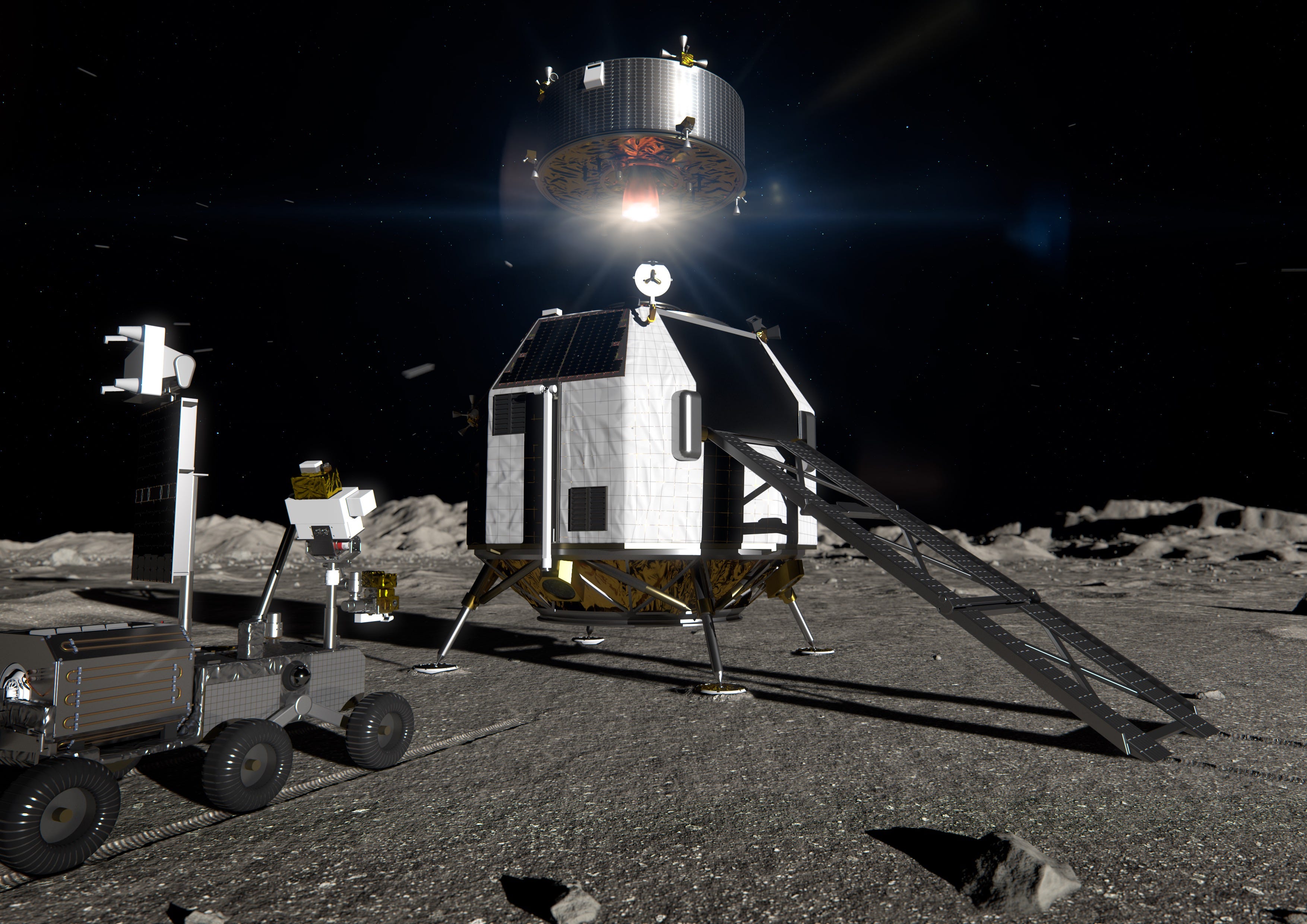
This artist's impression shows the liftoff of a spacecraft carrying samples from the Moon’s Schrödinger crater. Credit: ESA A recent talk by an ISRO scientist highlighted that India is considering a sample return mission from the Moon, with the current top two candidate sites being the Lowell crater and Schrödinger.
In any case, scientists continue to build the groundwork required to execute future missions to Schrödinger. A group of scientists recently made a new, high-resolution geologic map of the crater, emphasizing features of its mountain ring. Using the map as a basis, they proposed a scientifically-rich robotic exploration plus sample return mission, human-assisted from the NASA-led Gateway station in lunar orbit. Now a new study used high-resolution imagery and elevation data from NASA’s LRO spacecraft coupled with spectral data from Clementine to produce the most detailed morphologic map of the crater’s central lava plains. Using this map, they proposed traverse paths for a rover mission to collects samples from 20 unique locations, which will help us better our understanding of the Moon as well as fundamental processes in our solar system.
More Moon
Out of over 1,200 active readers, less than 4% support Moon Monday in any capacity. I’m publishing this one-of-a-kind Moon exploration newsletter for free, with no ads. If you like my comprehensive, weekly and timely global coverage of lunar exploration and science, please consider supporting to keep it going.
Please also take the 2-minute anonymous survey to share your feedback on Moon Monday. Thank you.
